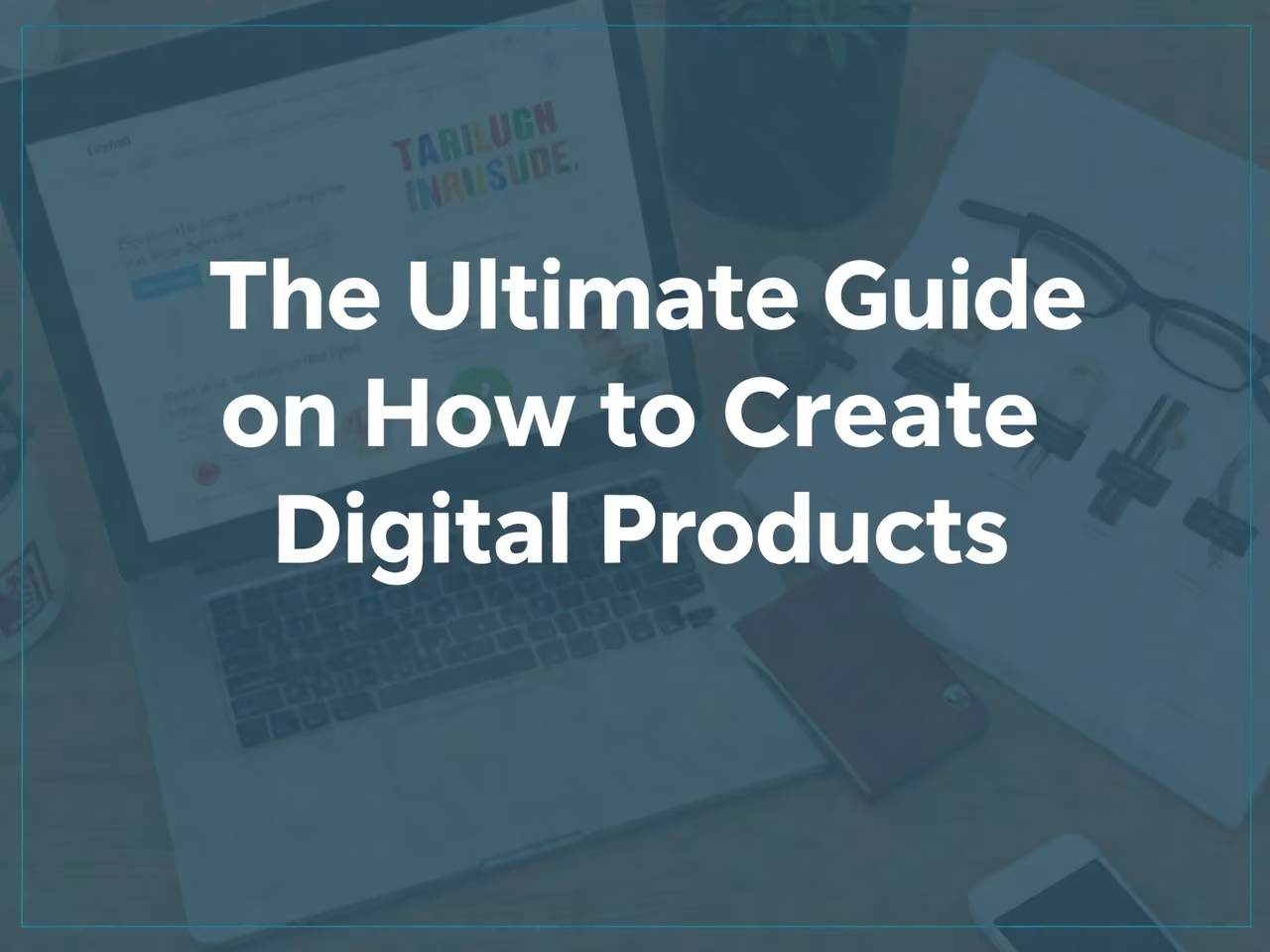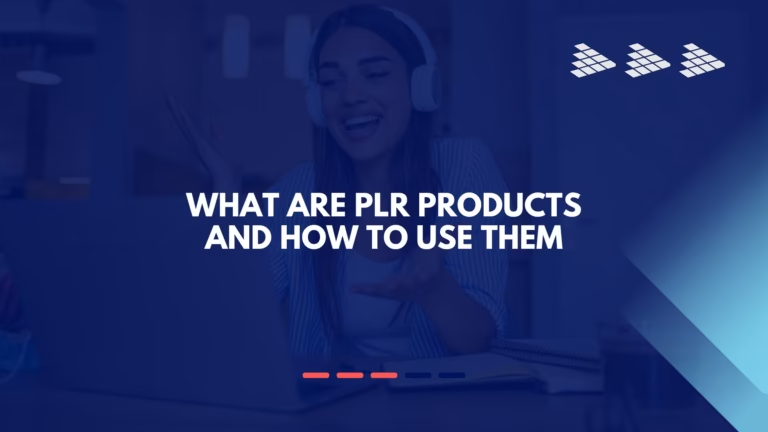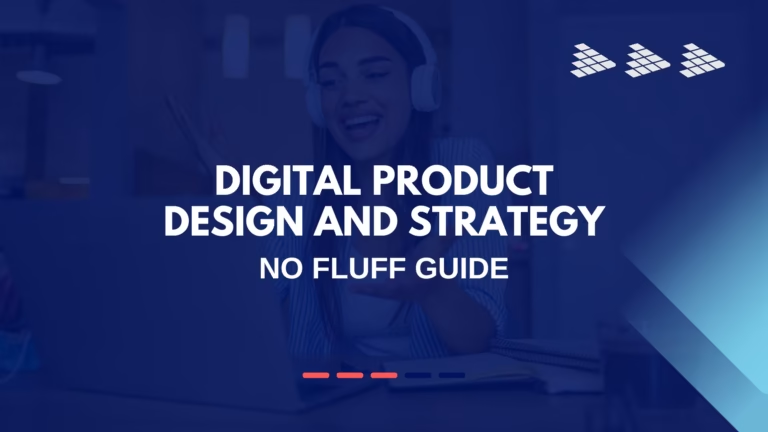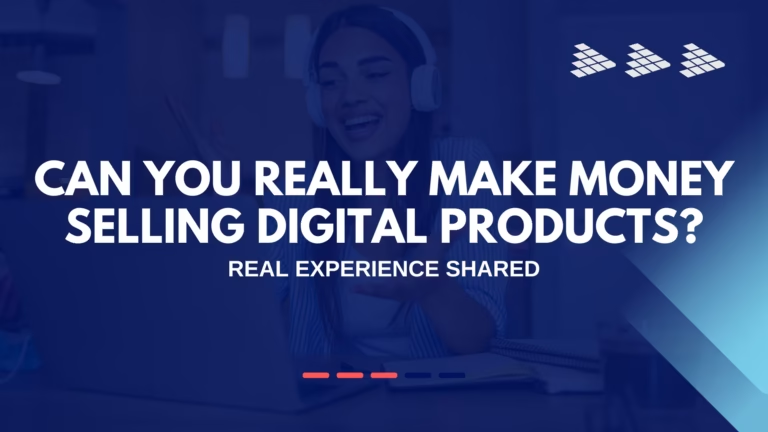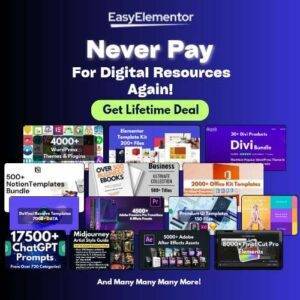1. Understanding Digital Products
Feeling overwhelmed by the sheer number of tutorials on how to create digital products? You’re not alone. The landscape has exploded beyond simple ebooks and printables, and it’s easy to get stuck in “idea mode” without ever launching.
I’ve been there. I spent months brainstorming my first online course, only to realize I was building something nobody really wanted. It was a tough lesson, but it taught me that the process of how to create digital products that sell isn’t about guesswork—it’s about a smart, strategic system.
In 2025, digital products are no longer just static files. They are dynamic, interactive experiences. We’re talking about AI-powered tools, subscription-based communities, interactive guides, and even blockchain-verified digital assets. The good news? This expansion means there’s a perfect niche for almost every skill set.
This guide will walk you through the exact steps—from that initial spark of an idea to a polished, profitable product. Let’s demystify the process and turn your knowledge into a thriving digital business.
The digital product market has generated over $124 billion in 2025 alone , demonstrating massive opportunities for beginners and experienced creators alike. What makes digital products so appealing is their potential for passive income—you create them once and sell them repeatedly to different customers .
Key Benefits of Selling Digital Products
To understand the key benefits of selling digital products, let’s dive deeper into why creating and selling digital products is one of the most intelligent and lucrative business models in the digital age. These aren’t just minor advantages; they are fundamental shifts that remove the traditional barriers of starting a business.
1. Low Overhead Costs: The Ultimate Lean Business Model
This is arguably the most significant advantage, especially for beginners and solopreneurs. When we say “low overhead,” we mean it.
- No Inventory Costs: Unlike a physical product business where you must invest thousands upfront to manufacture, store, and manage stock (with the constant risk of items going unsold), your digital inventory is simply a file on your computer or cloud storage. A single ebook, template, or course can be sold an infinite number of times without you ever needing to “reorder.”
- No Shipping or Packaging: You eliminate all costs associated with boxes, mailers, bubble wrap, postage, and international shipping fees. There’s no trip to the post office and no dealing with lost or damaged packages. This saves you not only money but an enormous amount of time and stress.
- Minimal Startup Fees: You can start for free using tools like Canva for design, Google Docs for writing, and a free trial from an e-commerce platform. As you grow, your main costs will be for professional software subscriptions and marketing, but these are negligible compared to the capital required for a physical product-based business.
In my experience, this low barrier to entry was what finally pushed me to start. I didn’t need to take out a loan or save up for months. I used tools I already had to create my first product, which meant my risk was minimal. I was determined to learn digital product design and strategy.
2. High Profit Margins: Keep What You Earn
The financial structure of digital products is incredibly efficient. Once the initial development cost (your time) is covered, every subsequent sale is almost pure profit.
- The 70-90% Margin Explained: Let’s say you sell a digital planner for $20. If you sell it on a platform like Etsy or Payhip, you might pay a small listing fee and transaction fee (let’s estimate $2 total). Your profit is $18. That’s a 90% profit margin. With a physical product, that $20 item might have cost you $8 to make and $5 to ship, leaving you with only $7 profit (a 35% margin).
- Economies of Scale Work Perfectly: There is no “cost per unit.” It doesn’t cost you more to create the 1000th copy of your product than it did the first. This means your profit margin doesn’t dilute as you scale; it actually improves as you spread fixed costs (like software subscriptions) over more sales.
3. Built-in Scalability: Work Once, Get Paid Repeatedly
This is the engine of passive income that makes digital products so powerful.
- Serve One or One Million: Your production capacity is limitless. Whether one person buys your online course or a thousand people buy it tomorrow, the product delivery is identical. There’s no need to hire more staff, rent a bigger warehouse, or worry about production bottlenecks.
- The “24/7 Employee”: Your digital product is like a perfect employee that works for you while you sleep, take vacations, or focus on creating your next offering. An e-commerce platform like Shopify or Teachable can automatically deliver the product, manage customer logins, and process payments without any intervention from you.
4. Global Reach: Your Store Never Closes
The internet is your marketplace, breaking down all geographical limitations.
- Borderless Customer Base: Your customer isn’t just the person in your city or country. Someone in Tokyo, Berlin, and Buenos Aires can all discover, purchase, and download your product simultaneously. This dramatically expands your total addressable market.
- Always Open for Business: Unlike a physical store with set hours, your digital store is open 24 hours a day, 365 days a year. This allows you to make sales across different time zones, capturing customers at the exact moment they are searching for a solution.
5. Automated Fulfillment: The “Set It and Forget It” System
Automation is the key to freeing up your most valuable resource: your time.
- Instant Gratification for Customers: The moment a customer completes their purchase, they receive an automated email with their download link or login details. This immediate delivery meets modern consumer expectations and reduces the chance of purchase abandonment.
- A Hands-Off Process for You: Platforms like Kajabi, Gumroad, and WordPress with dedicated plugins are designed to handle the entire post-purchase process for you. This automation ensures a smooth customer experience and completely eliminates the manual labor of order fulfillment, allowing you to focus on marketing and creating.
What I learned the hard way is that digital products require the same careful planning as physical businesses, despite their lower barriers to entry. The quality of your product and your marketing strategy ultimately determine success, not just the fact that it’s digital. You can also buy premade MRR and PLR digital products if you dont want to start building from scratch.
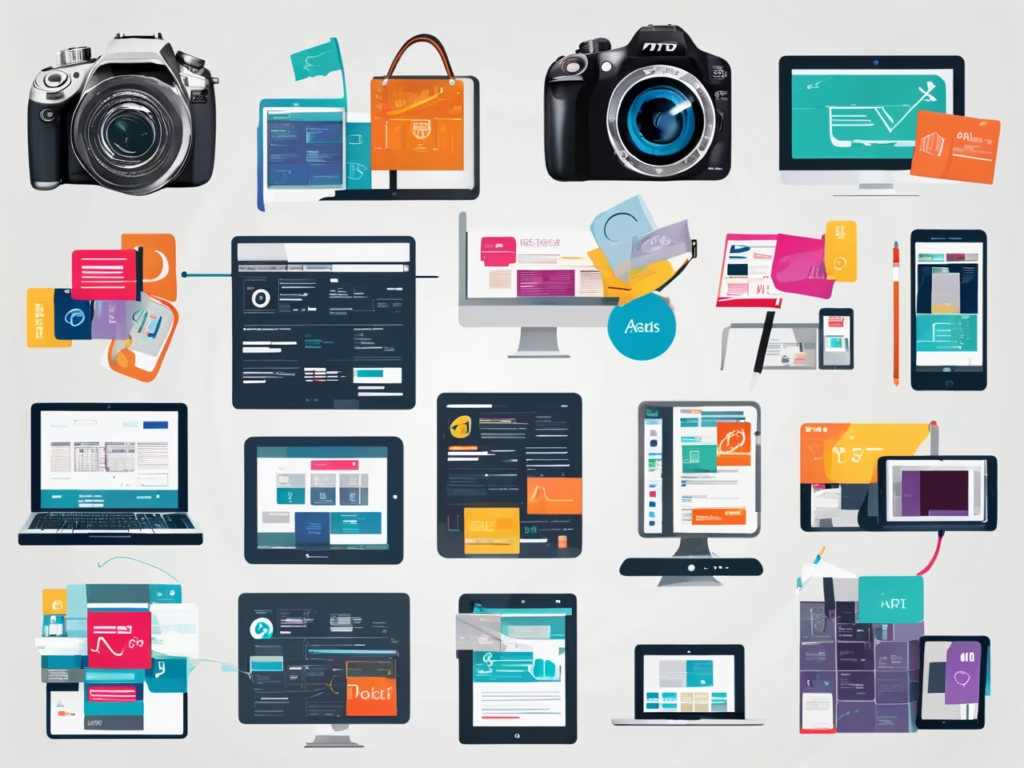
2. Most Profitable Digital Product Categories
Understanding which digital products perform well in the market helps you make informed decisions about what to create. Here are some of the most profitable digital products in 2025 based on current trends and consumer demand:
Table: Profitability Comparison of Digital Products
2.1. Ebooks and Written Guides
Ebooks consistently rank as one of the best digital products for beginners . They’re simple to create, require no inventory or shipping, and have strong profit margins between 60-80% . The global ebook market is valued at $14.9 billion , showing significant demand across various genres.
Popular ebook topics include:
- How-to guides and educational content
- Recipe books and cookbooks
- Fiction and nonfiction works
- Self-help and professional guides
- Blogger and social media guides
2.2. Online Courses and Tutorials
With a market share exceeding $200 billion globally , online courses represent one of the most scalable and profitable digital products available. People perceive educational content as highly valuable, allowing you to command premium prices compared to other formats like ebooks .
Successful course topics often include:
- Fitness and wellness programs
- Photo and video editing skills
- Professional development
- Creative arts and crafts
- Technology and software training
2.3. Templates and Design Assets
Templates provide frameworks that help users save time and create professional-looking content quickly. The demand for templates spans numerous applications, from resumes and presentations to social media graphics and website designs .
Top-performing template types:
- Canva templates for social media, presentations, and marketing materials
- Website themes for WordPress and other platforms
- Resume and business document templates
- Productivity planners and trackers
- Design assets for professional software
In my experience, templates represent the sweet spot for beginners—they’re relatively easy to create, have high perceived value, and address specific pain points that people are willing to pay to solve.
2.4. Digital Art and Media Products
If you have creative skills, digital art products can become a significant source of income. The demand for digital art spans both corporate and individual customers, with needs ranging from logos and brand kits to social media graphics and digital illustrations .
Profitable digital art products:
- Logos and brand identity kits
- Social media graphics and templates
- Stock icons and vector illustrations
- Print-on-demand designs
- Digital patterns and textures
2.5. Selling MRR Digital Products (Master Resell Rights)
In the landscape of digital products, MRR (Master Resell Rights) offers a unique and accelerated path to entrepreneurship. Essentially, MRR digital products are ready-made items—such as ebooks, software, courses, or template packs—that you can purchase once and then resell to your own customers, often keeping 100% of the profit. This model acts as a “business-in-a-box,” allowing you to bypass the initial, time-intensive stages of product creation and jump straight to the sales and marketing phase.
For a beginner, the appeal is clear: you gain immediate access to a professional-quality product without needing specific expertise in its creation. However, it’s crucial to understand the specifics of the license you’re granted. Always verify what you are allowed to modify, whether you can sell the resell rights to your own customers, and the overall quality of the product. While MRR offers a low-barrier entry into the digital marketplace, your success will still hinge on your ability to market effectively and ensure the product provides genuine value to your audience.
3. The Digital Product Creation Process
Creating successful digital products requires a systematic approach. Follow this step-by-step framework to go from idea to launched product efficiently.
3.1. Ideation and Market Research
The foundation of a successful digital product is validating your idea before creation. Strategic ideation involves asking your audience what they want and need, then creating a unique solution that fills market gaps .
Conduct effective market research by:
- Exploring social media to see what’s trending
- Joining niche-specific groups on LinkedIn and other platforms
- Using Google Trends and Google Keyword Planner to identify popular searches
- Analyzing existing competitors and identifying gaps in their offerings
- Surveying your audience about their struggles and desired solutions
Here’s a tip I always give beginners: Start by creating what your existing audience already asks you about. If people consistently request your resume template or ask how you edit your photos, that’s strong validation for a digital product.
3.2. Define Your Target Audience
Having an accurate understanding of your target audience’s pain points is crucial to product development . Create a detailed buyer persona that includes:
- Personal demographics: age, gender, location, income level
- Professional demographics (for business-focused products)
- Goals, challenges, priorities, and values
- Shopping preferences and behavior patterns
3.3. Strategic Product Development
Once you’ve validated your idea and understand your audience, it’s time to create your product. Work efficiently by grouping similar tasks together and following a predetermined plan .
Effective creation workflow:
- Organize each section and outline all content
- Create slides and write talking points or scripts as needed
- Develop tools and templates that will accompany your product
- Create any quizzes, surveys, or interactive elements
- Record all videos at once, then edit, caption, and upload systematically
3.4. Testing and Quality Assurance
Before launching, gather a small group of testers to work out any kinks in your product . This beta testing phase provides invaluable feedback that helps you refine the user experience.
Ask beta testers specific questions like:
- Did the product solve your problem?
- What problems did you encounter while using the product?
- What did you feel was missing from the product?
- How would you improve the product?
3.5. Pricing Strategy
Determine your pricing by considering the value your product provides, what competitors charge, and what your target customers can justify paying .
Common pricing ranges for digital products:
- Short ebooks (20-50 pages): $5-20
- Comprehensive guides (50-150 pages): $19-50
- Templates and planners: $10-50
- Online courses: $50-$500+
- Premium software tools: $20-100/month
Table: Digital Product Launch Checklist
4. How to Create Digital Products Using Canva
Canva has emerged as one of the most powerful and accessible tools for creating digital products for free or at minimal cost. With its user-friendly interface and extensive template library, even beginners can create professional-looking digital products.
4.1. Getting Started with Canva
To begin creating digital products on Canva:
- Sign up for a free Canva account
- Familiarize yourself with the interface and basic functions
- Explore templates relevant to your product ideas
- Learn basic design principles through Canva’s tutorials
For more structured learning, consider taking the “Create and Design Digital Products using Canva” course on Coursera, which teaches intermediate to advanced skills using the free version of Canva.
4.2. Popular Canva Digital Products
Social media templates: Create cohesive sets of templates for different platforms that maintain brand consistency .
Ebook covers and interiors: Design professional-looking ebook covers and formatted interior pages using Canva’s layout templates .
Printable products: Develop planners, journals, worksheets, and trackers that users can print at home .
Presentation templates: Design slide decks for various purposes, from business presentations to educational content .
4.3. Selling Canva Templates on Etsy
Many creators successfully sell Canva designs on Etsy by following these steps:
- Create unique, valuable templates that solve specific problems
- Ensure your designs follow Canva’s licensing terms
- Create attractive mockups to showcase your templates
- Write clear descriptions explaining how to use your templates
- Provide excellent customer support and quick response times
Here’s a tip I always give beginners: When creating Canva templates for resale, focus on specific niches with demonstrated demand—social media managers, small business owners, teachers, and real estate agents are all great target markets with specific content needs.
4.4. Protecting Your Canva Designs
When selling digital products created on Canva, it’s crucial to protect your intellectual property:
- Use watermarks on preview images
- Clearly state usage rights and limitations
- Consider using PDF protection for printable products
- Regularly monitor for copyright infringement
5. Where to Sell Your Digital Products
Choosing the right platform to sell your digital products is crucial for success. Here’s a breakdown of the most popular platforms and their strengths:
5.1. All-in-One Ecommerce Platforms
Shopify: Provides complete control over your store with extensive customization options. Ideal for established brands looking to scale.
Sellfy: An all-in-one platform supporting digital products, print-on-demand, and subscriptions. Known for its user-friendly interface.
Payhip: Specializes in digital products with features for online courses, downloads, and coaching products.
5.2. Creative Marketplaces
Etsy: Known for creative and unique products, ideal for digital creators offering items like art prints, templates, or ebooks. Already has built-in traffic searching for handmade and creative goods.
Creative Market: Tailored for designers and creators selling digital assets like templates, fonts, and graphics. Curated marketplace with quality standards.
Gumroad: User-friendly platform for selling a wide variety of digital products, from PDFs to online courses. Simple setup process.
5.3. Website-Based Solutions
WordPress with ecommerce plugins: Offers maximum flexibility and control when you want to build your brand on your own website.
MemberPress and similar plugins: Ideal for subscription-based content and membership sites.
Squarespace: Provides elegant templates for creating video pages, member sites, and online courses.
5.4. Course-Specific Platforms
Teachable: Specialized platform for creating and selling online courses with robust student management features.
Kajabi: All-in-one platform for knowledge entrepreneurs offering courses, communities, and marketing tools.
Udemy: Marketplace model where you benefit from their existing student base but have less control over pricing.
6. Marketing Your Digital Products
Creating a great digital product is only half the battle—effective marketing determines your success. Here are proven strategies to promote your digital products:
6.1. Build an Email List
Email marketing remains one of the most effective channels for selling digital products. Build your list by offering a valuable lead magnet related to your paid product .
Effective email marketing strategies:
- Offer a free mini-course or guide in exchange for email addresses
- Send regular newsletters with valuable content
- Create automated email sequences that nurture subscribers toward purchases
- Share customer testimonials and success stories
- Offer exclusive discounts to subscribers
6.2. Social Media Marketing
Leverage multiple platforms to reach your audience:
- Use Instagram and Pinterest for visual products
- Create YouTube tutorials demonstrating your product’s value
- Join LinkedIn groups related to your niche for professional products
- Use Twitter to establish thought leadership in your industry
Ashley Renee, who successfully sold over 1500 ebooks in her first months, emphasizes using social media strategically to drive traffic to your store. She posted consistent, engaging, high-quality content related to her keto recipe e-book, which captivated her audience and led them directly to her store through links in her bio .
6.3. Content Marketing and SEO
Create valuable content that addresses your audience’s questions and problems, then optimize it for search engines to attract organic traffic.
Effective content marketing approaches:
- Write blog posts addressing common questions in your niche
- Create video tutorials demonstrating your expertise
- Guest post on popular blogs in your industry
- Optimize your product descriptions with relevant keywords
6.4. Collaborations and Influencer Partnerships
Partner with other creators or influencers to promote your product to new audiences . This can significantly expand your reach beyond your existing network.
Successful collaboration strategies:
- Offer affiliates competitive commission rates
- Provide influencers with free product access and promotional materials
- Create co-branded content that benefits both audiences
- Join affiliate programs in complementary niches
6.5. Launch Strategy
Make your product launch feel like an event to generate excitement and urgency .
Effective launch sequence:
- Build anticipation with teaser content
- Create a landing page to collect emails before launch
- Offer limited-time bonuses for early purchasers
- Host a live webinar or Q&A session about your product topic
- Share behind-the-scenes content from your creation process
In my experience, the most successful digital product launches combine multiple marketing channels—email sequences to your list, strategic social media promotion, limited-time offers, and affiliate partnerships create a powerful combination that drives sales.
7. Frequently Asked Questions
What is the easiest digital product to create?
For beginners, the easiest digital products to create are templates, printables, and simple ebooks . These require minimal technical skills, can be created with free tools like Canva or Google Docs, and address specific, immediate needs that people are searching for solutions to.
Can I really create digital products for free?
Yes, you can create digital products for free using tools like Canva (for designs), Google Docs (for writing), and free video recording software. The main investment is your time and expertise rather than money for physical materials or inventory.
How do I find my niche for digital products?
Find your niche by combining your expertise with market demand . Identify problems people are willing to pay to solve, research competition in potential niches, and consider where you can provide unique value that isn’t already saturated in the market .
Do I need a large social media following to sell digital products?
No, you don’t need a large social media following to sell digital products successfully. While having an audience helps, you can also drive traffic through SEO, paid advertising, partnerships, email marketing, and marketplace sales where the platform already has built-in traffic .
How much does it cost to start a digital product business?
You can start a digital product business with minimal costs—often under $100 . Basic expenses might include a website domain, ecommerce platform subscription, and potentially some software tools. Many creators start with entirely free tools and upgrade as their business grows .
Can I sell the same digital product on multiple platforms?
Yes, you can generally sell the same product on multiple platforms, though some marketplaces may have exclusivity requirements. Using multiple platforms increases your reach and reduces dependence on any single source of traffic or income.
8. Conclusion
Creating and selling digital products represents one of the most accessible and profitable business models available today. With low startup costs, high profit margins, and global reach potential, it’s no wonder that digital product creation has become such a popular path for entrepreneurs, creators, and experts.
Key takeaways for your digital product journey:
- Start with validation – Ensure there’s demand for your product before investing significant time.
- Leverage free tools – Use platforms like Canva and Google Docs to minimize startup costs.
- Focus on specific niches – Solve particular problems for specific audiences rather than trying to appeal to everyone.
- Prioritize quality and value – Your product should deliver clear results and positive experiences.
- Implement strategic marketing – Build an email list, create valuable content, and use multiple promotion channels.
The digital product landscape continues to evolve with emerging opportunities in AI-generated content, interactive experiences, and blockchain-based assets . By starting now and building your skills in digital product creation, you position yourself to capitalize on these future trends while generating passive income today.
Remember that your first digital product doesn’t need to be perfect—it needs to exist. As one successful creator advises, “Your digital product can and will change over time” . The most important step is to begin, learn from the process, and continuously improve based on customer feedback and market response.

